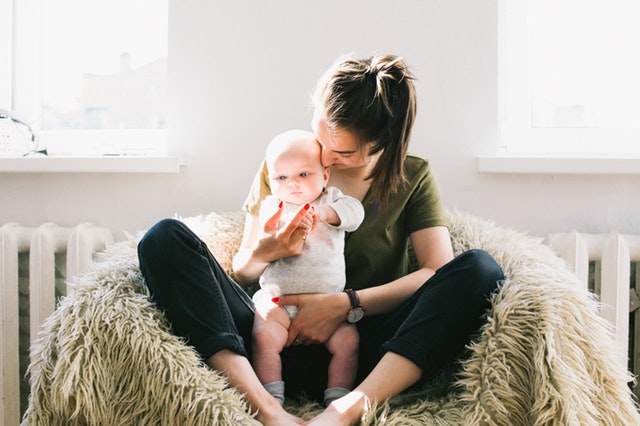One of the scariest things for all parents is the reality of Sudden Infant Death Syndrome (SIDS). SIDS is the unexplained, unexpected death of a baby who is less than one year old. Because it usually occurs when the infant is sleeping, it is sometimes called “cot death”. What catapults SIDS into pole position in the realm of fear, is that it is, unfortunately, the leading cause of death in babies under the age of 1 year. All parents want to know when they can stop worrying about SIDS and the usual answer is not before your baby is one year old.
What parents want to know is what causes it and how to prevent sudden infant death syndrome. Unfortunately, there are no concrete definitive studies to prove what the leading cause is, which makes it even scarier for new parents.
What you need to know about SIDS
Even though there is nothing you can do to definitely prevent it, there are still a few things you can do that might help your anxiety about SIDS. And it starts with knowledge!
- It is a very real thing! It’s unwise to assume that “it will never happen to me”, as approximately 2500 babies die from SIDS annually in the USA. Statistics for South Africa are
not as readily available as internationally. - The primary age group that suffers from SIDS are babies aged between 4 and 6 months.
- The syndrome affects more boys than girls.
- SIDS occurs more frequently in cold or inclement weather.
- Your baby will be more at risk if you had a difficult or complicated pregnancy and/or if your baby was born prematurely.
Steps to ensure that your child is safe – SIDS prevention
A safe sleep environment is fundamentally important:
- Make sure nothing covers the baby’s head.
- Use a firm sleep surface, such as a mattress in a safety-approved crib, covered with a fitted sheet.
- Do not use pillows, blankets, sheepskins, or crib-bumpers anywhere in your baby’s sleep area.
- Keep soft objects, toys, and loose bedding safely stored away from your baby’s sleep area.
Positioning:
- Always place your baby on his or her back to sleep, for naps as well as at night. While some parents are concerned that a baby sleeping on its back is more likely to choke on vomit or spit-up, according to the American Academy of Paediatrics (AAP), lying on the back does not increase this risk. Babies normally cough up or swallow fluids on their own with no choking problems. Note: Parents of babies who have been diagnosed with Gastroesophageal Reflux Disease (GERD) or certain upper airway problems should consult their doctors about back sleeping. In some cases, stomach sleeping is recommended, but this should always be at the recommendation of the child’s physician.
- Make sure that your baby’s airway is not obstructed. This means that your baby should never have his/her chin on his chest. This occurs in car seats, slings, and even while breastfeeding. Keep in mind that your child breathes primarily through his/her nose and this needs to be open and unobstructed.
- A baby’s head is heavy. Until your little one displays good neck control, it is important to ensure that it is always well supported.
Where should my baby sleep?
Whether parents should co-sleep or not is heavily debated topic. Studies have proven that co-sleeping increases the risk of SIDS. In many cases, infant death associated with co-sleeping is not the result of SIDS, but rather of accidental asphyxiation.
Babies can suffocate if a parent changes sleep positions and accidentally blocks the baby’s airway. Infants who sleep face-to-face with a parent are more susceptible to inhaling the carbon dioxide that the parent exhales.
Soft, fluffy bedding can also suffocate an infant. If you do want to co-sleep, Good Night HIGHLY recommends safe co-sleeping options such as a crib extension to the bed.
What causes SIDS?
As mentioned, “the clever people” are still undecided. Most scientists believe that babies who die of SIDS are born with one or more conditions that cause unexpected responses to the internal and external stressors common during an infant’s life.
This latest research, published in the Journal of Neuropathology and Experimental Neurology, confirms and supports the concept that brainstem dysfunction, resulting in significantly altered serotonin expression, is associated with some SIDS deaths. Serotonin is a key neurochemical that plays an important role in the control and management of the complex respiratory, cardiovascular and autonomic systems within the human infant brainstem.
“Our research suggests that alterations in these neurochemicals may contribute to brainstem dysfunction during a critical postnatal developmental period. As a result, this could lead to an inability of a SIDS infant to appropriately respond to life-threatening events, such as lack of oxygen supply during sleep.”
SIDS is probably a group of different things — not all babies are necessarily exactly the same in terms of what caused the SIDS. Many researchers argue that finding the cause or causes of SIDS lies in a deeper understanding of the development and functions of the brain and nervous system of infants, including those who succumb to SIDS.
#sleeptraining


